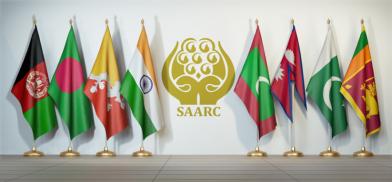South Asia needs to pay more attention to public health; SAARC needs to pool health resources
What really jumps up from the plethora of information floating around is the lack of preparedness and lack of governmental attention to health care, especially in the overcrowded South Asian region, writes Sreeradha Datta for South Asia Monitor

Faced with the COVID 19 pandemic one of the first moves by the Indian Prime Minister Narendra Modi was to call for the South Asian Association for Regional Cooperation (SAARC) to work together to confront the virus that was ravaging all in its path as it moved towards South Asia. While the SAARC leaders all responded positively pledging their contribution towards fighting the coronavirus that the world was faced with, it was increasingly becoming clear that whatever was being done was often not being enough, given the magnitude of the problem.
With the huge population residing in India, Bangladesh and Pakistan, the governmental efforts were being overwhelmed with the sheer numbers of the people who needed to be kept safe and healthy from this virus. Barring Nepal and Bhutan who were not much exposed to the virulent COVID-19, India, Bangladesh and Pakistan has been struggling to bring the situation under control. It is scary and unprecedented, to say the least. For the leadership, it was virtually thinking on their feet and planning incremental steps to try and not be completely overtaken by the virus surge.
The government machinery moved quickly in each of these states and it was reassuring to see, many of the government websites updated and providing useful real-time information. The SAARC website has not lagged behind either and was providing comprehensive information and data through graphs and tables on the COVID-19 situation. However, what really jumps up from the plethora of information floating around is the lack of preparedness and lack of governmental attention to health care especially in the overcrowded South Asian region. There was very little attention been given to what is now being understood ought to be a core priority?
To recall briefly in the immediate period of being re-elected PM Modi had promised to increase the health budget to 2.5 per cent of GDP by 2025. Evidently, India has one of the lowest in the area of 1.15 per cent now -- one of the lowest in the world - while the World Health Organisation’s recommendation is 5 per cent. Indeed Bangladesh’s spending is around 2.8 per cent of its GDP (2016, WHO) While Pakistan hovers around 2.6 per cent (2016, WHO), Bhutan is 3.6 per cent (2016 WHO), Sri Lanka is 3.5 per cent (2016 WHO), while Nepal is higher in the region of 5 per cent (2014 WHO) with the Maldives being the highest at 13.7 per cent ( 2016 WHO).
Without a doubt, there will be a reset in this world and for long the reference before corona and after corona will influence the international community and its behaviour. While there will be many issues that will need re-examination and economy will certainly need the closest focus, that apart there, two most evident ones are being flagged here. Firstly, the state of public health cares. The public health sector certainly existed, but somewhere lurking in the background playing second fiddle to medical practitioners and being mired in the pecking order of the bureaucratic machinery.
Even if scientists were to predict that the world will not see a spectre of the likes just witnessed in another 100 years there will inevitably be a serious re-examination of the public health sector. Or at least it ought to be. The study of public health has been confined and not considered as belonging to the strategic world. Re-examining public health policy would need several types of inputs ranging from the sphere of finance to state’s ability to manage the multitude of issues that confront from actual ensuring individual physical wellbeing to managing open and closed public spaces, access to water and sanitation to revisiting daily lives and livelihood patterns and problems of rapid and unplanned urbanisation too. The SAARC foodbank exits too, but where is it when it is needed most? The Indian National Health Protection Scheme - also known as Modicare scheme - has been a milestone in Indian experience but would need to increase its depth and width to make a real change to the large underprivileged section specifically.
Public health is bound to find space in the strategic space too. Indeed, few of those think tanks mainly those associated with the western nations have tried to develop expertise in this arena, but very few national strategic think tanks have brought it within their mainframe. While non-traditional strategic thought has now begun to include climate and environment issues, in the near foreseeable future the public health domain is bound to dominate many of the new worlds rethinking.
As the situation unfolds, South Asian states will have to consider prioritising this domain. While this sector exists within the SAARC framework and one that falls within Indian ambit, one did not see the preparedness to initiate programmes regionally and collectively. While SAARC for obvious political reasons has been in cold storage, the inability of a regional organisation to react and ensure collective measures reflects poorly on the SAARC members and their leadership. Evidently, regional collaborations lack strength, momentum and most importantly political will.
Now, more than ever, it is apparent that the fight to overcome the pandemic does not reside only within one owns borders. The global economy has rarely seen such a sudden regression and will take a tremendous effort to re-build and re-energise. And to avoid any such similar event in the future the sector of public health will need immediate attention and actionable policies. In India and in South Asia surely.
(The writer is Centre Head, Neighbourhood Studies and Senior Fellow, Vivekananda International Foundation, New Delhi)
Her email - sreeradha@yahoo.com
Her twitter handle - @SreeradhaDatta









Post a Comment